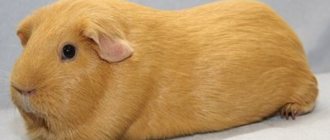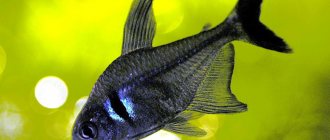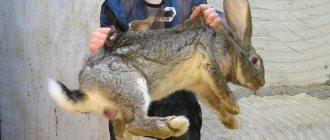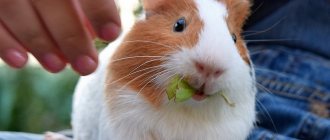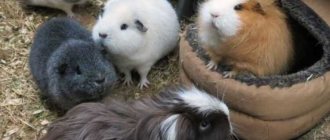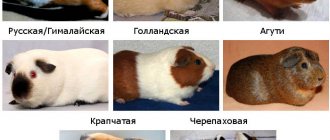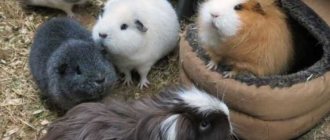Review author: “ZooVita”
Rabbits are unpretentious animals. They reproduce well and grow at home. There are more than two hundred breeds of these furry animals all over the world. They are raised for their meat and fur. There are also decorative breeds. Animals raised for meat are usually kept outdoors.
Decorative specimens live in cages at home. Representatives of large breeds of rabbits reach up to 10 kg in weight. They are usually raised on specialized rabbit farms.
Belgian Flanders
The breed was obtained by crossing a Flemish rabbit with an Argentine one. It is considered the most common in the world. The rabbit has a large head, fleshy and long erect ears.
The length of the animal can reach 65 cm. The weight of the largest individuals reaches 10 kg. The offspring that the female brings at a time range from 8 to 15 rabbits.
Features of the direction
Rabbit down is a valuable material that occupies its rightful place alongside cashmere, mohair, and alpaca. Rabbit fluff is used in the manufacture of knitwear, felt, outerwear and knitted items. Global rabbit down production is concentrated in China and Western Europe.
Properties of rabbit fluff
The downy hair of some rabbit breeds reaches 20 cm in length. The fur of a down breed rabbit contains 92-98% fine downy hair and only 2-8% awns.
Advantages of rabbit fluff:
- Softness and tenderness - in comparison with goat down, rabbit down does not prick.
- Hypoallergenic . Rabbit down is often used in the production of children's clothing.
- Rabbit fluff does not require labor-intensive processing - combing out hair, degreasing, washing, drying.
- The warming qualities of rabbit down are higher than those of sheep wool and Angora goat down.
- As a natural material , rabbit fluff has healing properties.
The main disadvantage of rabbit down is its low strength; products made from it wear out quite quickly. Rabbit down is very warm and in its heat-protective properties surpasses even angora and sheep wool.
The fluff obtained from the back, hips and rump is considered the most valuable, while the lower quality is considered to be from the chest, shoulder blades and abdomen of the animal.
Down volumes
The quantity and quality of fluff obtained from a rabbit depends on the age, breed, season, care of the animal, and on the frequency and method of collecting fluff. From 2-month-old rabbits you can get up to 15 g of fluff, 4-5-month-old rabbits up to 25 g, 6-month-old rabbits - 30-35 g, and adult rabbits are able to produce 30-50 g of fluff per month. Summer down collection is less productive than winter.
The annual collection of fluff from an adult rabbit is 350-500 g, the best breeding animals can reach a productivity of 900 g. Down is collected mainly from female rabbits, adult males have coarser hair, so they are used mainly for breeding.
Gray giant
A very common breed that was created in Ukraine. The Flemish breed was crossed with outbred individuals. Very unpretentious, resistant to any climate.
They are distinguished by an elongated head and long ears. The body reaches a length of 66 cm. The color is usually gray. There may be shades of black or reddish color. The female brings 6-12 rabbits.
White giant
This is the pride of Belgian breeders. This is the result of crossing the Gray Giant with the Belgian breed. Eyes are red, without signs of pigmentation. The fur is pure white. The head is elongated, narrow erect ears. The body length is up to 60 cm. Large individuals reach a weight of 6 kilograms. A female's litter usually contains 7-9 babies.
California breed
The result of successive crossing of different European breeds. Rabbits are distinguished by their relatively small head size and body length. The ears are small and erect. The eyes are red, the fur is white. The nose, ears, tail and paws are bright black. Weight up to 5 kg.
Californian carcasses are considered very meaty.
Female rabbits give birth to 6-10 rabbits in one litter. Completely unpretentious to the climate. They feel good both in frosty Siberia and in the hot steppes.
Meat
Breeding meat rabbits is the most profitable direction. The animals grow actively, gain weight well, have good muscles and produce tasty meat.
The best meat breeds are also called broiler breeds. These include New Zealand white, New Zealand red, Californian and Burgundy (Figure 10).
The highest quality meat is produced by New Zealand white and red animals. They have the following distinctive features:
- Medium in length, cylindrical body;
- Wide and fleshy abdomen;
- The head is wide with a slight curvature from the eye to the nose;
- Ears rounded at the ends, erect, short;
- The legs are straight, strong, the hind limbs are more fleshy;
- The eyes are pink (in albino individuals);
- Thick, shiny, soft fur;
- The breed is early maturing;
- The animals are hardy and prolific;
- Adults are calm and docile;
- They tolerate temperature changes well;
- Life expectancy is on average 5-10 years;
- The diet requires special attention.
The most unpretentious of all meat types is Californian . Such individuals do not have excess fat deposits, are quite fleshy, are distinguished by innate immunity and the ability to easily adapt. Their live weight is slightly less than that of the New Zealand ones, but they have superior growth rates and are distinguished by a strong build, thick white hair with dark spots on the muzzle, paws and tail. The animals are quite smart and friendly, and the live weight of adult individuals can reach 5 kg. Females are highly fertile, and the young quickly gain weight.
Figure 10. Representatives of meat types: 1 - New Zealand white, 2 - New Zealand red, 3 - Californian, 4 - Burgundy
The Burgundy is considered one of the best meat breeds. Its representatives reach sexual maturity already at 4 months of age. The body is muscular, covered with a skin of medium density light brown hair. Animal fur is not particularly valuable. Females are very fertile: a female can give birth to up to 12 cubs at a time. Animals grow quickly, have a strong body and good immunity.
Soviet chinchilla
It originates from the White Giant crossed with the French chinchilla. The animal is compact with a pronounced rounded back. The head is medium, the ears are erect. The body length of some specimens reaches 70 cm, weight - up to 5 kg.
They are considered precocious animals. At 4 months they reach a weight of 4 kg. The fur is gray. Female rabbits bring from 8 to 12 rabbits per litter.
Main classification
Divided into 5 types:
- meat;
- fur;
- downy;
- decorative;
- homemade.
Meat
They are bred for slaughter to produce dietary meat. They reproduce well. Unpretentious. Many people grow them at home.
| Breed | Breeds involved in breeding | Description |
| Californian | Representatives of European breeds. | The body length is 55 cm, has a cylindrical shape. The thick, short fur is bright white with contrasting dark limbs. The eyes are red. 4-5 kg. |
| Soviet chinchilla | White giant, French chinchilla. | The body grows up to 70 cm. Thick coat with dense undercoat. The shade is uneven, changing from bottom to top from gray to silver with an admixture of white. 4-5 kg. |
| Black-brown | White giant, Flanders, Vienna blue. | The body is small, 61 cm. The fur is dense, black and tan. 5-7 kg. |
| Silver | Shaman breed. | The body is shortened, 57 cm. The fur is silvery in color with a transition from dark bottom to light top. 4-6 kg. |
Downy
Rabbit down is used in the production of outerwear, knitwear or knitted items. It is valued for its softness, warmth, and hypoallergenicity.
| Breed | Breeds involved in breeding | Description |
| Angora | The oldest ancient breed. | In nature, there are 5 varieties: English, giant, French, dwarf, German, satin (satin). Body size varies from 30 to 70 cm. The coat is thick, 15-25 cm long. The main shades are white, gray, beige. 3-5 kg. |
| White | It was bred in Russia by crossing representatives of the European Angora breed. | Grows up to 50 cm. Massive body. The head is proportional, the ears are small, with tassels. The fur is thick, of medium length (15 cm), the color is pure white. 4 kg. |
| Arctic foxes | Various indigenous breeds that began to be bred long ago in the central region of Russia. | Small, dark gray down. Weight – from 2.5 to 3.5 kg. Hardy. They produce up to 200 grams of fluff per individual annually. |
Fur and fur-meat
Rabbits are raised not only to produce tasty meat. The fur skins of these animals are of great value and are used in the production of outerwear, blankets and other things.
| Breed | Breeds involved in breeding | Description |
| Belgian Flanders | No. | The body is elongated, 65 cm. Dense, thick fur of different colors, varies from light to dark. Weight from 6 to 10 kg. |
| Gray giant | No. | The body is of average length 60 cm. The coat is not very thick, medium. The color contains red, gray, and black shades. 4-7 kg. |
| White giant | Soviet chinchilla, Belgian breed, Gray giant. | Grows up to 60 cm. Weight 5-6 kg. Red eyes stand out brightly against the background of thick white fur with a dense undercoat. |
| Butterfly | Decorative breed. The hybrid was obtained by crossing with Flanders and Vienna Blue to breed skinned specimens. | The body is compact, length 56-58 cm. Thick short white fur with dark spots. 4-6 kg. |
| Soviet Marder | Obtained by combining Chinchilla and Ermine. | The body is small, 50 cm. The short-haired fur is brown. The limbs, muzzle, tail and back are highlighted with a more saturated shade. 3-4 kg. |
Decorative
Dwarf rabbit breeds are purchased as pets.
| Breed | Description |
| Shorthaired Dwarf | The body shape is cylindrical, size 20 cm. Rounded head with small ears, short limbs. There are more than 60 colors, the main ones: white, gray, brown. The wool is soft and smooth. 1 kg. |
| Dutch dwarf | Miniature copies of their larger counterparts. The body is 15-20 cm long. The fur is short. The color of the croup and the back of the head corresponds to the shade of the eyes, the main color is white. Weight up to 1 kg. |
| Fox dwarf | The body is compact, 20 cm. The fur is thick and long. The predominant color is brown, chinchilla. 1-1.5 kg. |
| Lion head | The body is small, 10-20 cm. The fur is long and shiny. The eye color matches the coat. Weight 1.2 kg. |
| Lop-eared rabbit ram | Large representatives of decorative breeds. They grow up to 60 cm. The shape of the head resembles a “ram”. Because of their drooping ears, they hear worse, so they are less fearful. The wool is soft, with a dense undercoat. The palette of shades is varied: white, gray, blue, yellow. Weight reaches 3 kg. |
| Pygmy hare | Proportional body, grows up to 30 cm. Skins are white with dark spots that are not visible at birth. The eyes are bright scarlet. 2 kg. |
| Dwarf rex | The body is elongated, cylindrical, 30 cm long. Short-haired, the fur is like plush. With an unusual bright color. 1.5-4 kg. |
| Dwarf butterfly | They grow up to 30 cm, the body is elongated. The coat is short, thick, shiny. White with black spots. The pattern is similar to the pattern of butterfly wings. 1-1.8 kg. |
For home use
You can keep decorative and slaughter rabbits at home. Many breeds are unpretentious and do not require large financial costs and effort to care for them.
Many varieties that have agricultural purposes, due to their beautiful appearance and calm nature, are increasingly moving into the category of pets, for example, Flanders, Risen, Angora.
| Breed | Breeds involved in breeding | Description |
| Lop-eared ram | No. | The body is elongated, 70 cm long, the head looks like a lamb, the ears are hanging. Shorthair. The palette is varied, includes more than 20 colors. 4-6 kg. |
| Vienna blue | An endangered species. Flanders and Moravian Blue were crossed. | Proportional rounded body 60 cm. Dense, blue fur. 4-5 kg. |
| Russian ermine | No. | Compact body, 52 cm. Red eyes. The fur is short and thick. White. Limbs are brown. 3-4 kg. |
| Rex | No. | Lean body, 54 cm. Underdeveloped mustache is located on the muzzle. The fur is plush-like, short and thick, brown in color. 3-5 kg. |
Risen
They have Belgian roots. The Belgian Flanders breed quickly spread throughout Europe and was extremely popular until the end of the 19th century, when German breeders announced that they were able to develop their own breed of especially large individuals.
Please note ⭐⭐⭐
Domestic duck: varieties and rules for caring for them, how to breed ducks at home
Domestic hedgehog: rules for keeping it at home, tips for choosing an animal (120 photos)
- Domestic ferret (ferret): features of keeping and caring for the animal, standards, types of breeds, what they eat, how long they live (photo)
This breed was given the name Risen (Riese-giant, German). And to this day, representatives of this breed are considered the largest among their brothers.
The peculiarity of the representatives of the breed is their large body, fleshy ears, and large paws. Some males reach a weight of 12 kilograms or more.
Rex
The appearance of this breed was facilitated by the Flander mutation. They are distinguished by a compact body and pronounced roundness of the croup. Unlike animals of other breeds, these rabbits have poorly developed whiskers. They weigh up to five kilograms.
A distinctive feature is thick but short fur. Therefore, the animal resembles a beautiful plush toy. The fur is usually chestnut or brown in color. Rex rabbits are mainly bred to obtain unusually beautiful fur.
Rabbit French Ram
People owe the appearance of the ram rabbit breed to a spontaneous mutation, as a result of which the ears lost their usual vertical position and drooped, making the animals look like sheep. The change in appearance was noticed and consolidated by selection. And today, lop-eared rabbits are popular not only as agricultural meat animals, but also as pets.
The ancestors of modern breeds of rabbits with drooping ears were the English Fold. The first specimens of French sheep rabbits were demonstrated in the middle of the nineteenth century in France. Unusual large animals first spread as a curiosity in their homeland, and then migrated to neighboring countries. The breed was greatly influenced by German breeders, who, as a result of long selection, obtained truly productive, fast-growing farm animals. The average weight of an adult male exceeds five kilograms, and females are only slightly lighter.
In addition to a remarkable physique and excellent fatness, lop-eared rabbits demonstrate high quality fur, and the color palette is quite wide, which only increases interest in the sheep breed, and lop-eared rabbits can be seen in an increasing number of farms.
The only feature that should be known to the owners of such unusual animals is the negative impact of the mutation on the rabbits' bones. The same gene that causes the ears to droop also causes the cartilage tissue throughout the skeleton to harden and ossify. As a result, females after one year of age often cannot give birth, and adult animals may have problems with joints.
Decorative breeds
They differ from meat ones only in size. Keeping rabbits at home - feeding, caring for them, and the timing of vaccination are the same.
Rabbits of decorative breeds adapt well when kept in an apartment. They quickly get used to their owners, even if the animal is acquired as an adult. They willingly make acquaintances with cats or dogs.
Please note ⭐⭐⭐
Domestic horse: description of breeds, types, features of maintenance and care, colors, what they eat, how long they live (140 photos)
Domestic goat: breeds with names, rules of care and breeding at home, many photos and features of an unpretentious animal
Domestic pig: description of how to keep and care for it at home. Breeds, sizes, what they eat, habits (115 photos)
Being clean animals, they willingly relieve their needs in the tray. They keep their fur, ears, and paws clean on their own; water procedures are carried out with them only in cases of extreme necessity.
Decorative rabbits become the same favorites of the whole family as dogs and cats. Photos of a domestic rabbit are often posted by owners on Instagram and personal pages on social networks as a source of pride.
Content Features
For the Angora rabbit breed, cage housing is preferable. The breed is very demanding about dryness and cleanliness of the premises, as dirt spoils the quality of the coat. Young animals can be kept 3-4 per cage, full-aged rabbits only one by one. The size of the cages is 75x60x50 cm, the floor is made of mesh or planks; in the cold season and during the calving period, bedding is added - large straw (shavings and sawdust spoil the fur). Read more about keeping rabbits at this link.
Angora rabbits have weak immunity against intestinal and respiratory diseases. Regular vaccinations and veterinary examinations are required.
Caring for angora fur is labor-intensive: combing 1-2 times a week, plucking or cutting at least once every 3 months . Young animals are combed with a large brush starting from 2 months; adult animals are groomed manually using special combs, brushes and scissors. A few days before the breeders mate, it is advisable to trim the back of the body. Lactating female angoras also have the fur around their nipples shortened so that the rabbits can find them.
Combing rabbits is the basis of hair care
Feeding downy bunnies
The diet of downy rabbits must include:
- industrial feed;
- vegetables - cabbage, root vegetables: beets, radishes, carrots;
- fruits;
- hay and fresh grass;
- bone meal, mineral supplements;
- fresh water.
The diet of rabbits depends on the age of the individual. The basics of feeding rabbits are covered here.
The protein content in the feed must be at least 19%. To increase the protein component, cake, meal, and legumes are added to the feed. The daily diet includes 1.5 g of table salt and 3 g of bone meal.
Getting fluff
In practice, three methods of obtaining fluff are used: plucking, shearing and combing. Pregnant and recently bred females should not be plucked. In winter, the collection of fluff should be gentle so that the animals do not suffer from the cold.
The first collection of fluff is carried out from 2-month-old rabbits by shearing, subsequent ones - at 4.5 and 6 months, then plucked monthly. The maturity of down is determined by its ability to separate from the skin. Collection begins when the hair reaches a length of 6 cm; longer fluff falls off more often.
Among the common problems of downy breeds of rabbits are fleas and lichen, which can greatly damage the quality of the animal's fur and skin.
As delicately as possible, young animals are accustomed to the procedure. The rabbit is placed on your knees with its muzzle facing you, holding it by the bases of its ears. Plucking is carried out from the head to the tail of the animal and from the ridge to the sides. Then the animal is turned over and the breast and abdominal part of the body are plucked. The fluff is separated in the direction of hair growth, pressing the strand with your thumb to the teeth of a comb, preferably an aluminum one with sparse teeth.
The haircut is carried out with sharp scissors. A parting is made on the back along the ridge, then the hair is cut from the back to the stomach. The scissors are held as close to the skin as possible, trying not to injure the animal. Sheared fluff is not uniform in length and is considered to be of lower quality than plucked fluff; after shearing, the fur grows back more slowly.
Raw materials are stored in wooden boxes or boxes in a dry, ventilated area.
Lionhead
The name of the breed corresponds to the type of animal. The rabbit's head resembles the head of a lion. The mane of fur covers only the head. The body is covered with short fur, which can be of different shades. The weight of an ornamental animal is no more than 1.7 kg.
Dwarf Rex
Its color resembles a beaver. Short and thick fur. The pure line of the breed is indicated by curved, weak whiskers. Maximum weight - 1.5 kg, length up to 0.5 m. Fur color may vary.
Red New Zealand rabbit
In addition to the white New Zealand rabbits, there is a red variety that is also used for fur and meat. The weight of strong, well-fed animals up to half a meter in length does not exceed 4.5 kg, but the relatively low carcass weight is compensated by the high taste, fertility and endurance of the breed.
The peculiarity of this meat breed of rabbits is its bright unusual color, which can vary from brick-red to deep red.
Beautiful fur, hairy paws, compact build - all this makes it possible to raise New Zealand red rabbits outdoors even in rather harsh conditions.
Dutch dwarf rabbit
The breed is distinguished by its white and black color. A special feature is the pronounced color around the eyes. The same color is on the ears and paws. Fur can have up to twenty shades. The weight of a rabbit is up to 1.5 kg.
Please note ⭐⭐⭐
Chickens at home: care rules, breeding instructions, overview of breeds and species with photos and names
- Chinchilla: features of keeping at home, colors, photos, character, how long they live, what they eat, how to care for them, interesting facts
Parrot at home: types, photos, breeds, names, colors, sizes, interesting facts
How to deal with poisoning in rabbits
Various poisonings are very dangerous for rabbits. Therefore, you should be careful when preparing food for them. If you decide to give your rabbit grass or hay, be careful not to include plants that are poisonous to rabbits. Remember that rabbits are a meadow animal and all meadow grasses are their usual food.
Forest plants, as well as herbs growing near water bodies and in shady areas, are considered dangerous. The healthiest ones will be clover, dandelions and sedge.
Note!
- How to protect a gazebo from rain and wind in summer and snow in winter - a review of the best options
Chicken - description, types, classification, nutrition and maintenance of domestic chicken (115 photos and videos)
- Fretka - lifestyle, care and character traits. 115 photos and videos tips for keeping a pet ferret
If you still cannot avoid poisoning, and you notice loose stools and a decrease in activity in the animal, you need to take urgent measures. Immediately give your rabbit a quarter tablet of activated charcoal. Be sure to contact your veterinarian as soon as possible.
With loose stools, it is necessary to ensure a comfortable condition for the rabbit. The litter needs to be changed when it gets dirty. Be sure to wash your rabbit if necessary.
Nutrition
The main food for eared animals is hay. Balanced dry food is added to it, which manufacturers produce specifically for rabbits. They are usually sold in granule form.
Rabbits will also readily eat oats and barley. Cabbage, carrots, boiled potatoes are a delicacy for them. Animals have simple food requirements, so problems with what to feed rabbits at home usually do not arise.
How and what to feed?
Feeding Angora breeds is completely similar to the diet of other rabbits. It includes industrially produced feed, potatoes, cabbage, fruits, and cereals. They also provide legumes, grass, branches, and hay. Rabbits are given bone and grass meal in their food and are provided with constant access to clean water.
Vegetables for feeding rabbits
Disease Prevention
Despite the fact that raising rabbits at home allows you to maintain ideal cleanliness in the cages, animals require mandatory vaccination.
The first vaccination (against myxomatosis) is given when the animal reaches one month of age. Two weeks later, when the baby rabbit reaches a weight of approximately 500 g, a vaccine against viral hemorrhagic infection is given. This vaccination is repeated after 90 days.
How long does a domestic rabbit live? With proper care, the average life expectancy of large breed rabbits is 4-5 years. Dwarfs live longer. Their age is 7-8 years. Rabbits that are kept without a pair live shorter than their counterparts. If animals are not kept alone, they will live longer
conclusions
Interest in downy breeds of rabbits in Russia is gradually being revived. It is still not easy to buy quality breeding animals. There are difficulties with the sale of raw materials; private textile and knitting production is rare. It makes sense to grow downy breeds in the following cases:
- if you have home or handicraft production of knitted products;
- stable demand for rabbit fluff and sales opportunities;
- you specialize in selling breeding animals;
- Of interest are decorative rabbits (dwarf angoras), bred for home keeping.
Despite the laboriousness of caring for downy breeds, there is a demand for them, and there are business owners devoted to them.
Also read about what diseases rabbits are susceptible to in this article.

